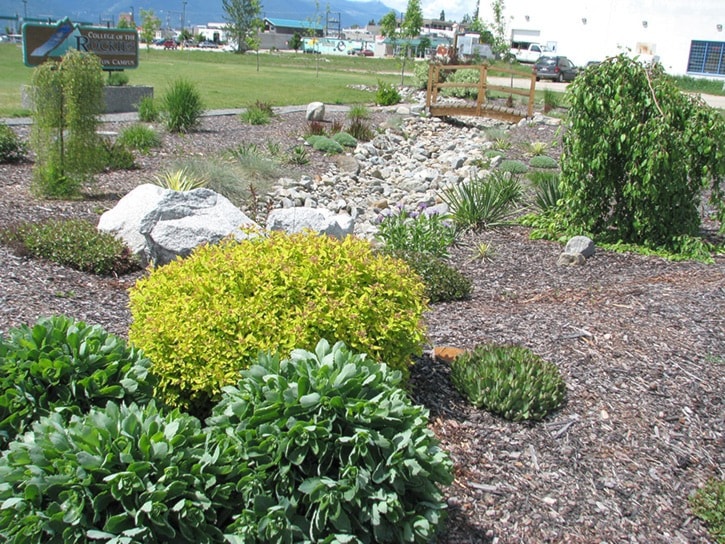Let’s get one thing out of the way to start. It’s xeriscape, not zeroscape. The term for low-maintenance, low-water-demand landscaping is often mis-said, and understandably so, because zero sounds like the ideal amount of effort that landscaping should require.
Xeros, however, is Greek for “dry” and the word “xeriscape” simply refers to a gardening form that minimizes the use of water.
Promoted as an alternative for grass lawns, xeriscaping makes full use of plants, often native to the area, that require little or no water that doesn’t fall from the sky. But the increasingly popular approach to landscaping also adds interest, inviting creativity that extends far beyond the use of a single type of grass, an endless battle against dandelions and weekly rounds with a lawnmower and weed-whacker.
Landscape designers build in features that make the end result look far different than an artful arrangement of perennials and shrubs. With the addition of a variety of mulches or decorative rocks to cover space between plants, a mundane lawn can be transformed into a Japanese-style garden or even a Zen-like meditation space.
In front of the College of the Rockies, on 16th Avenue South, lies what is perhaps Creston’s best-known xeriscape project, designed by staff and students at the college, with consultation by Beltane Nursery owner Evan Davies.
Once the design was created, the next step was to move or supplement the existing soil to create what amount to miniature hills and valleys, creating the base for a look that would be interesting right from the start, but also become more appealing as the plants matured.
Landscape fabric is a xeriscapist’s best friend. It reduces weed growth but allows for rainwater to soak through. It also allows for evaporation, important because few plants like to sit in saturated soil.
Non-plant features are typically created first. The college plan included a “dry river”, a river-like formation created by the placement of large and small rocks laid to look much like a riverbed, one that would never have water flowing through. Crossing that “river”, of course, is a lovely pedestrian bridge, made entirely of wood.
With the completion of those elements, plants were set by making slits in the landscape fabric. Varieties were selected for their propensity to send out deep roots to find water, for their visual appeal and because they were particularly suited to the local climate.
With the planting complete, a generous layer of bark mulch was spread on top. The mulch provides an insulating layer to keep the ground surface temperature steadier, allows rainwater to filter through to the ground, and discourages weed growth. The weeds that do start are easy to pull as there is no soil in which the roots can anchor.
The end result serves as a demonstration garden for local residents to see firsthand. And the project could prove contagious. A similar project is expected to soon be underway in front of the college’s neighbor to the south, Creston and District Public Library. Expect to see another example of how low-maintenance, environmentally responsible xeriscaping can create a great alternative to grass lawns.
